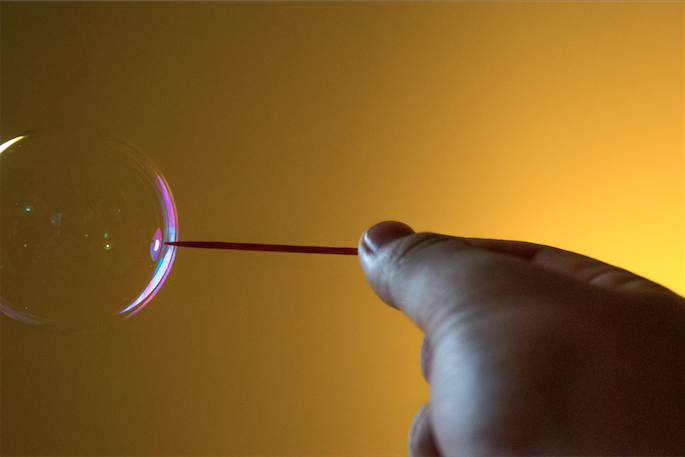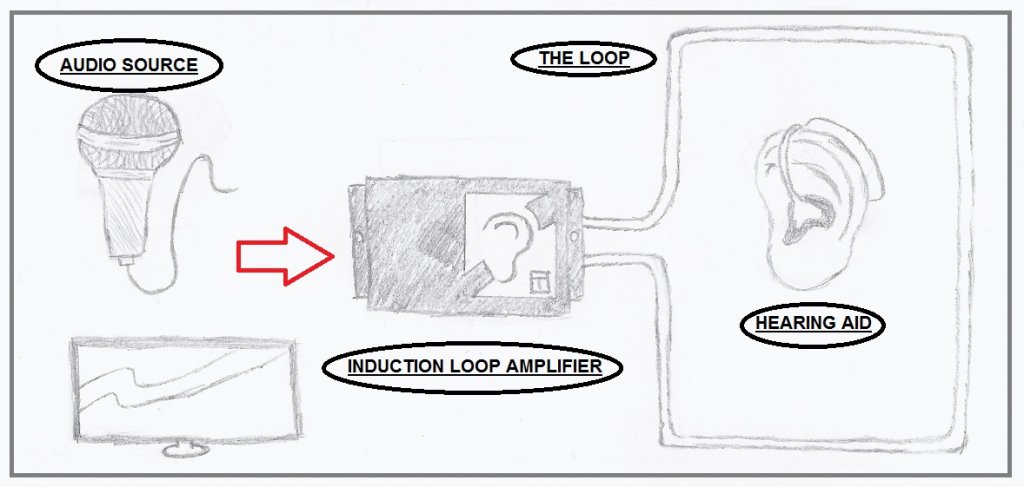Breaking the 2 Meter Hearing “Bubble”

Modern hearing instruments (aids, devices) provide significant benefit to persons dealing with hearing loss. Testimonials abound about hearing sounds, such as the song of a bird, the chatter of a child, or the sweet strains of some favourite music that have not been heard for far too long. While sounds of interest are enjoyed once again, noises – sounds that we don’t want to hear – are back too. In addition, the problem of noise, as well as reverberation, increases as the distance to the sound that we want to hear increases. Intelligibility suffers. This problem of distinguishing sound from noise, or even sound from delayed and reverberated sound – as defined by signal to noise ratio (SNR) – is often most evident in the space beyond 2 meters from the sound source. Acoustically unfriendly environments abound in places like the home TV room, the pharmacy, bank, fast food or ticket counters, boardrooms, meeting spaces, churches, theatres, performing arts centres, auditoriums or stadiums. Even world class venues with the best acoustics and the best sound systems do not significantly enlarge the 2 meter “bubble”. As a result, environmental noise and reverberation remain a hindrance to effective hearing for everyone and especially for people who have hearing loss.
The effect of distance from the sound source is intensified for those using hearing aids. Think of input to the hearing aid microphone as an ever expanding funnel. As one moves further and further away from the sound source, the “funnel” in effect, becomes wider and wider. It gathers in more and more sounds, and more and more noises and mixes them all together – decreasing the SNR. When coupled with the reduced discrimination capability that accompanies hearing loss, intelligibility and listening enjoyment suffer immensely.
Is there a solution? Yes, reduce the distance between the desired sound and the hearing aid. But I’m sitting 25 meters from the lectern on the podium! Well, what if the microphone in your hearing device was (virtually) on the lectern? Twenty five meters just became 25 centimeters! There’s an easy way to do that?
Yes, it’s a simple, invisible, inexpensive and dignified solution that’s been around for years: the hearing loop system, interacting directly and invisibly with hearing aids. Hearing loops are in very common use in Europe and their use is now rapidly growing in North America. Ok, tell me more!
The diagram below shows a typical, complete hearing loop-to-hearing aid system.
 The venue audio source supplies sound to an amplifier which in turn sends the sound as electrical current through the loop (instead of through an acoustic speaker system). The loop is a wire that’s placed around a seating or standing area. The current flowing through the loop creates a magnetic field inside of the loop. This magnetic field, quite free of ambient noise and reverberation issues, can be clearly “heard” by simply switching the hearing aid to the t-coil / telecoil / telephone program. No headsets – inconspicuous, hygenic! No wires to connect – effortless! No pairing – easy! Any brand and model of hearing aid (universal!) that’s telecoil equipped becomes a miniature personal speaker providing the customized sound prescribed for the wearer. With a hearing loop, the microphone on the lectern of the auditorium or held by performer on the stage of the theater, in effect, takes the place of the microphone in the hearing instrument. The acoustic noise gathering distance has been reduced to less the 25 centimeters and SNR has been improved by 15–20 dB. Intelligibility has returned! Effective? These two comments notably describe hearing loop efficacy: “It sounded like the presenter was inside my head,” “you can see the astonished look on their faces when they connect”!
The venue audio source supplies sound to an amplifier which in turn sends the sound as electrical current through the loop (instead of through an acoustic speaker system). The loop is a wire that’s placed around a seating or standing area. The current flowing through the loop creates a magnetic field inside of the loop. This magnetic field, quite free of ambient noise and reverberation issues, can be clearly “heard” by simply switching the hearing aid to the t-coil / telecoil / telephone program. No headsets – inconspicuous, hygenic! No wires to connect – effortless! No pairing – easy! Any brand and model of hearing aid (universal!) that’s telecoil equipped becomes a miniature personal speaker providing the customized sound prescribed for the wearer. With a hearing loop, the microphone on the lectern of the auditorium or held by performer on the stage of the theater, in effect, takes the place of the microphone in the hearing instrument. The acoustic noise gathering distance has been reduced to less the 25 centimeters and SNR has been improved by 15–20 dB. Intelligibility has returned! Effective? These two comments notably describe hearing loop efficacy: “It sounded like the presenter was inside my head,” “you can see the astonished look on their faces when they connect”!
Achieving such results requires matching well qualified systems. Like hearing aids, hearing loops have industry performance standards. Just last year, the revised A117.1 ANSI standard formally included the International Electrotechnical Commission (IEC) 60118-4:2006 standard for hearing loops. This expanded adoption of standards has raised the bar for hearing loop performance requirements while also signaling an increasing acceptance of this technology in Canada and the USA.
To meet the IEC standard, the hearing loop signal volume level must be within +/- 3dB of the standard value of 400mA/m, must have a flat (+/- 3dB) frequency response from 100–5000 Hz and the electromagnetic interference (EMI) coming from ambient electrical sources must be at least 32 dB below the loop signal level. All of these standards can be readily met – with proper design and installation. Standard setups result in a uniform listening experience within a given loop system and between all loop systems. Correspondingly, hearing aid telecoil systems must also be set to ANSI standards to ensure that every hearing aid performs similarly. That standard requires that a 31.6 mA/m input to the telecoil in a High Frequency Average Sound Pressure Level in a Vertical field (HFA-SPLIV) test provides the same acoustical output as the hearing aid microphone provides with a 60dB SPL input (or 100 mA/m for 70 dB).
Help your clients break the 2 meter hearing bubble by fitting them with telecoil equipped hearing devices! It’s a non-proprietary, value adding, universal hearing solution that can be implemented almost anywhere – not just in larger meetings with a speaker at a podium. Hearing loops can be effectively used in a home tv room, a hearing clinic, a subway ticket counter, a large church, or performing arts centres, a stadium, an open air mass or a taxi, yes a taxi! A hearing loop is the only solution that works directly with the hearing aid in virtually every place frequented by your clients. Is there an easier way to increase client satisfaction?

